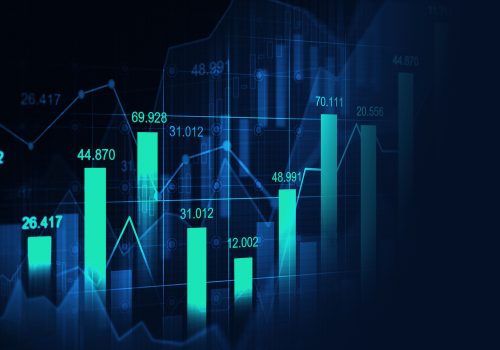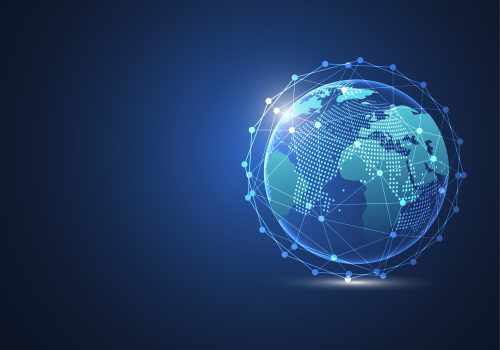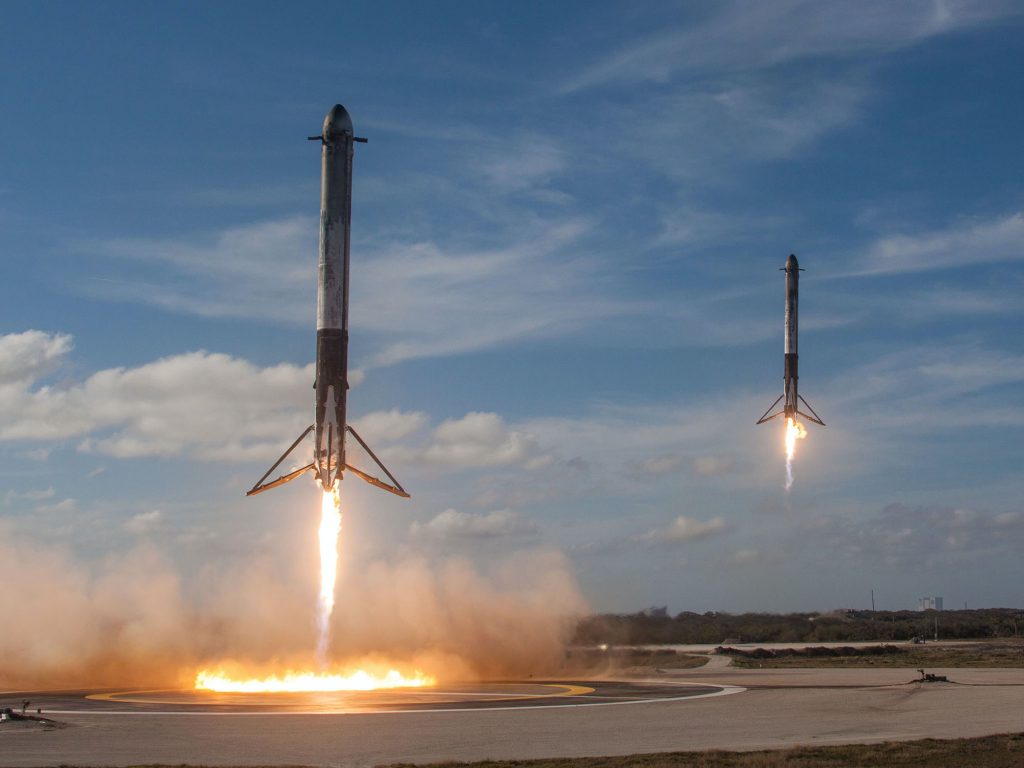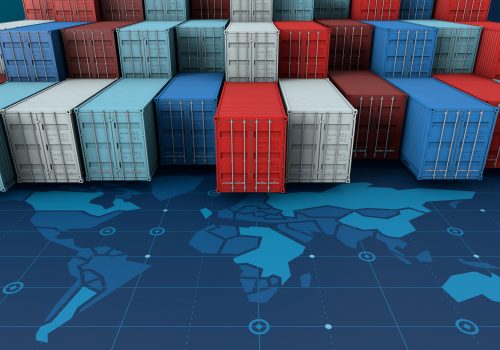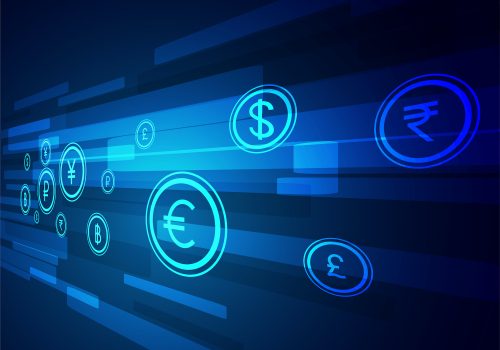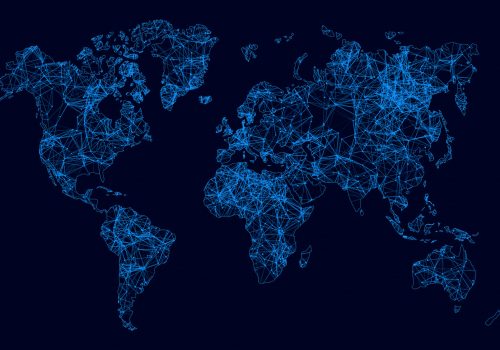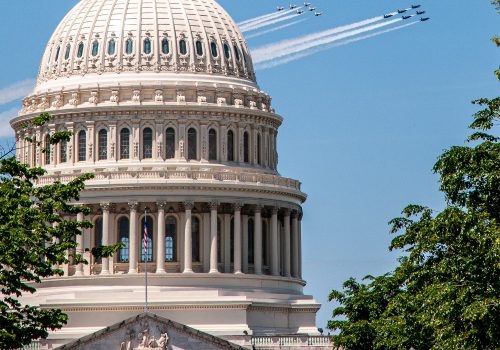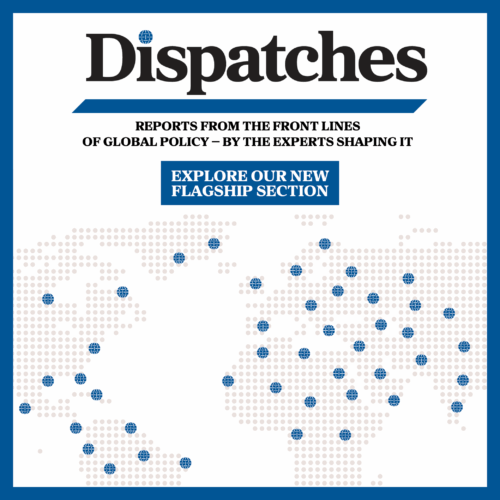III. A new policy agenda
This chapter is part of a larger report—Economic might, national security, and the future of American statecraft. Read the chapters here or download the PDF.
These three economic and technological trends, economic interdependence, transformational technologies, and cyberspace, pose challenges to American power, but they also present the United States with opportunities to leverage that power.
As Secretary of Defense Mark Esper recently warned, “The reality of the 21st century is that many economic decisions are also national security decisions.”1Mark Esper, “Remarks Delivered at the Munich Security Conference,” Department of Defense, Feb. 15, 2020, https://www.defense.gov/Newsroom/Speeches/Speech/Article/2085577/remarks-by-secretary-of-defense-mark-t-esper-at-the-munich-security-conference/. Still, balancing economic and national security policy is no easy task. Too often, security concerns related to economic decision-making get short shrift. But there is also an equal and opposite risk that unconstrained, ad hoc efforts to protect national security through economic policy could sap America’s competitive advantage, or worse. If taken too far, restricting or constraining key industries in the name of national security could undermine national competitiveness. Policymakers must therefore be prudent in how they weigh their decisions to compete and to preserve America’s and its allies’ competitive advantages. The recommendations that follow are designed to help policymakers do just that.
Our policy agenda seeks to confront the new reality described above by balancing investment in U.S. capacity with efforts to redress malicious behavior abroad, while at the same time strengthening America’s network of partners and allies, through three primary areas of focus:
I. Develop and support a national innovation policy
During the Cold War, federal research and development funding contributed to the prosperity, security, and, ultimately, primacy of the United States. The U.S. government funded basic and applied research projects and developed capabilities that served agency mandates, including new weapons systems and space technologies.2“National Patterns of R&D Resources: 2017–18 Data Update,” National Science Foundation, updated Jan. 8, 2020, https://ncses.nsf.gov/pubs/nsf20307#&. It mostly stayed out of commercial development, but private sector entities still benefited from federally funded research, turning scientific and technological advances into new companies, jobs, and industries, thus contributing to America’s unmatched prosperity.3The “knock-on” effects of federal research and development funding are well documented and include GPS, smartphone technologies, and, of course, the Internet. See, e.g., Rubio, “American Industrial Policy and the Rise of China.” Rubio said, “What I am calling for us to do is remember that from World War II to the Space Race and beyond, a capitalist America has always relied on public-private collaboration to further our national security. And from the internet to GPS, many of the innovations that have made America a technological superpower originated from national defense-oriented, public-private partnerships.” See also, James Manyika and William H. McRaven, Innovation and National Security: Keeping Our Edge, Council on Foreign Relations, Independent Task Force Report No. 77 (September 2019), 2, https://www.cfr.org/report/keeping-our-edge/pdf/TFR_Innovation_Strategy.pdf.
However, this approach is no longer sufficient given the convergence of economic and national security affairs. The private sector is the primary source of innovation and research and development funding now, yet new technologies increasingly blur the line between military and civilian use.4In recent years, the federal government was the largest source of basic research funding — providing roughly 42 percent of it — but commercial entities provided 85.2 percent of development funding. “U.S. Research and Development Funding and Performance: Fact Sheet,” Congressional Research Service, updated Jan. 4, 2020, https://fas.org/sgp/crs/misc/R44307.pdf. Moreover, as noted previously, these high-tech sectors are often winner-take-all. Foreign states and companies are challenging U.S. innovation leadership, including through anticompetitive policies and the two-way transfer of military and civilian technologies.5The Chinese Communist Party’s “Made in China 2025” plan, for example, called for significant government support of 10 high-tech and industrial sectors with the goal of ensuring primarily domestic supply chains and Chinese competitiveness on the global market. The party has since abandoned the label, but state subsidies and protectionist policies remain. See, Lingling Wei, “Beijing Drops Contentious ‘Made in China 2025’ Slogan, but Policy Remains,” Wall Street Journal, March 5, 2019, https://www.wsj.com/articles/china-drops-a-policy-the-u-s-dislikes-at-least-in-name-11551795370; and “‘Made in China 2025’ Plan Issued,” The State Council, The People’s Republic of China, May 19, 2015, http://english.www.gov.cn/policies/latest_releases/2015/05/19/content_281475110703534.htm. Each of these factors weakens the traditional U.S. approach to innovation, wherein the federal government focuses on either basic science research or specific applied research and development projects.
The Trump administration has taken some important steps to promote America’s economic dynamism.6For example, the administration has reduced the pace of regulations and prioritized deregulation, promoting competition and economic dynamism. See, The Economic Effects of Federal Deregulation Since January 2017: An Interim Report, The Council of Economic Advisors, June 2019, https://www.whitehouse.gov/wp-content/uploads/2019/06/The-Economic-Effects-of-Federal-Deregulation-Interim-Report.pdf. See also, “Special Briefing with Under Secretary for Economic Growth, Energy, and the Environment Keith Krach,” U.S. State Department, Feb. 4, 2020, https://www.state.gov/under-secretary-for-economic-growth-energy-and-the-environment-keith-krach/. It ought to accelerate these efforts to help ensure the success of U.S. companies in developing emerging technologies and to promote domestic innovation.7This view is shared by leaders on opposite ends of the political spectrum, from Elizabeth Warren to Marco Rubio. See, e.g., Julius Krein, “What Alexandria Ocasio-Cortez and Marco Rubio Agree On,” New York Times, Aug. 20, 2019, https://www.nytimes.com/2019/08/20/opinion/america-industrial-policy.html. The administration should continue its work with commercial entities to develop and acquire dual-use capabilities, and it ought to pair innovation support with targeted economic sanctions and international coordination to address the reality that U.S. companies do not compete on a level playing field with many of their closest competitors.
We recognize the real and justified concerns about crony capitalism and the inefficient allocation of capital, and we are not endorsing China’s centralized, top-down model. At the same time, we believe government should do more. To balance these competing objectives and to help ensure the government does not get in the habit of picking winners and losers, we propose the following principles to guide its investment.
To ensure these principles are followed and to direct innovation efforts, the policymaking process will need to adapt. These reforms should establish accountable systems for setting priorities, identifying sectors or capabilities for policy action, and rigidly adhering to these limiting principles.
A U.S. innovation policy governed by these principles would target those areas where government can provide distinct value and likely solve an existing market failure. Governments have a unique capacity to facilitate information sharing by opening channels of communication and establishing a regular process for public-private information sharing and engagement.13Dani Rodrik, “Industrial Policy for the Twenty-First Century,” Kennedy School of Government Working Paper, September 2004,https://drodrik.scholar.harvard.edu/files/dani-rodrik/files/industrial-policy-twenty-first-century.pdf. Doing so would help rebuild the relationships among the innovation triangle — the public sector, private industry, and academia — and would encourage mutual understanding, a necessary step for breaking down the cultural barriers that restrict collaboration between government and high-tech firms.14See, for example, comments made at the House Armed Services Committee’s Future of Defense Task Force Hearing “Supercharging the Innovation Base,” held on Feb. 5, 2020. Video recording available at https://armedservices.house.gov/hearings?ID=682ABC1D-2B60-481E-B210-2F43BC9476B2.
Investment strategies
Greater innovation will also require greater investment. We recognize that fiscal realities, especially in the wake of the much-needed pandemic relief packages, will constrain available resources.15See, e.g., Dov S. Zakheim, “Defense Budget Cuts Following the Pandemic Will Be Hard to Swallow,” The Hill, April 19, 2020, https://thehill.com/opinion/national-security/492756-defense-budget-cuts-following-the-pandemic-will-be-hard-to-swallow. Lawmakers will have to reorder their priorities and develop enduring, prudent solutions to long-term fiscal challenges, but should not do so at the expense of research and development funding. The cost of losing America’s competitive edge in innovation far exceeds the cost of the investment required to keep it.
The federal government should expand existing programs, including offering federal grants for basic science research to universities, supporting federally funded research and development centers, and providing direct research and development funding. To incentivize investment in basic and applied sciences, Congress should also increase the research and development tax credit, which is currently smaller than that of most member countries of the Organisation for Economic Co-operation and Development.16“R&D Tax Incentives: United States, 2019,” Organisation for Economic Co-operation and Development, December 2019, https://www.oecd.org/sti/rd-tax-stats-united-states.pdf. With AI and machine learning in mind, the U.S. government ought to facilitate access to data — a “valuable national resource and a strategic asset”17“Project Open Data,” available at https://project-open-data.cio.gov/. — by creating more open-source datasets, and expand access to cloud computing resources.18See, First Quarter Recommendations, National Security Commission on Artificial Intelligence, March 2020, 12–13, https://drive.google.com/file/d/1wkPh8Gb5drBrKBg6OhGu5oNaTEERbKss/view.
Many start-ups fail to innovate — to commercialize basic research at scale — in part due to a lack of demand at such an early stage.19See, for example, Rodrik, Industrial Policy for the Twenty-First Century. SpaceX, by contrast, became the innovative success it is today with the support of NASA, which provided some 50 percent of its funding in its first 10 years.20“U.S. Government Support of the Entrepreneurial Space Age,” Space Angels, June 17, 2019, 2, https://sbir.gsfc.nasa.gov/sites/default/files/2019-06-17-Space-Angels-JPL-Report.pdf. The commercial space industry, in general, has received significant support from the Small Business Innovation Research and Small Business Technology Transfer programs, and the federal government has supported the accompanying infrastructure and developed standards to sustain the industry.21“U.S. Government Support of the Entrepreneurial Space Age.”
The lesson is simple: There is no substitute for cash.22As Chris Brose, the former staff director of the Senate Armed Services Committee, once said, would-be defense contractors “need one thing more than any other from the U.S. government: revenue.” Christian Brose, “Supercharging the Innovation Base,” Testimony Delivered Before the Future of Defense Task Force, House Armed Services Committee, February 5, 2010, http://docs.house.gov/meetings/AS/AS00/20200205/110475/HMTG-116-AS00-Wstate-BroseC-20200205.pdf. When the U.S. government identifies a specific area of need, it should consider not only support for basic and applied research but also ways to provide sustained funding. Government contracts are the most direct means, but the federal government can also help increase access to capital through other means. The Department of Defense took steps to do just that with the establishment of the Trusted Capital Marketplace, which is intended to support innovative small- and mid-size firms.23Aaron Mehta, “To Counter China, Pentagon Wants to Create Patriotic Investors,” Defense News, May 10, 2019, https://www.defensenews.com/pentagon/2019/05/10/to-counter-china-pentagon-wants-to-create-patriotic-investors/. Government-backed venture funds serve that purpose as well.
The two most prominent examples of venture funds in the national security field are In-Q-Tel (where one of the authors currently serves on the board of directors) and the Defense Innovation Unit.24These funds facilitate defense and intelligence community procurement of new technologies, particularly from non-traditional contractors, and they encourage new entrants into the contractor market. As these programs develop a track record of success, the government will be presented with an opportunity: The Department of Defense can massively scale the Defense Innovation Unit. Raj Shah, the former managing director of the Defense Innovation Unit, called for a “step-change to supercharge DoD access to innovation.”25Raj Shah, “Supercharging the Innovation Base,” Prepared Testimony for a hearing before the Future of Defense Task Force, House Armed Services Committee, Feb. 5, 2020, 3, https://docs.house.gov/meetings/AS/AS00/20200205/110475/HMTG-116-AS00-Wstate-ShahR-20200205.pdf. Funding for that program and other innovation efforts should increase by an order of magnitude. In addition to established venture funds, first-loss funds, wherein the government would provide some portion of initial investment and be responsible for a significant portion of potential losses, could be utilized to incentivize private investment and harness market forces, while offsetting externalities that limit research and development funding.26For comparison, the Chinese Communist Party established “guiding funds” to incentivize private investment and establish venture funding for technology development. See the discussion of these funds in, Kai-Fu Lee, AI Superpowers: China, Silicon Valley, and the New World Order (Boston: Houghton Mifflin Harcourt, 2018), 64–65.
The Trump administration’s efforts to enact regulatory reforms that loosen the reins on innovation and ease the adoption of new civilian technologies are excellent and should continue.27For example, the Federal Communications Commission’s “Restoring Internet Freedom” order. See, The Economic Effects of Federal Deregulation Since January 2017: An Interim Report, The Council of Economic Advisers. For example, agencies ought to look for opportunities to adapt regulations or develop new, permissive environments early in the innovation cycle.28The Federal Aviation Administration, for example, is working with drone developers to modernize regulations. Patrick McGee, “US Considers How to Open Skies to Drones and Flying Cars,” Financial Times, Feb. 27, 2020, https://www.ft.com/content/a0341b02-54cd-11ea-8841-482eed0038b1. They should also remove onerous occupational licensing requirements, which hinder productivity and limit opportunities for broad-based innovation.29Jim Pethokoukis, “How Will Technological Change Affect the Economy? My Long-read Q&A with Erik Brynjolfsson,” American Enterprise Institute, Feb. 27, 2020, https://www.aei.org/economics/how-will-technological-change-affect-the-economy-my-long-read-qa-with-erik-brynjolfsson/.
Finally, efforts to promote domestic innovation should be pursued in coordination both with international partners and with economic statecraft efforts to achieve the same goal. Consider the domestic semiconductor manufacturing equipment and semiconductor industries. They form the backbone of 5G network infrastructure, machine learning systems, and most other modern technology, including many critical national security capabilities. And yet, China’s domestic development programs and the U.S. government’s own export controls could combine to hamstring U.S. industry. China’s state-supported effort to build out its domestic industry faces serious challenges but it could still reduce the market available to semiconductor firms in the United States and elsewhere, and in turn reduce their ability to fund research and development projects.30See, 2019 Annual Report to Congress, U.S.-China Economic and Security Commission, November 2019, 135, https://www.uscc.gov/annual-report/2019-annual-report; and James A. Lewis, Learning the Superior Techniques of the Barbarians: China’s Pursuit of Semiconductor Independence, Center for Strategic and International Studies, January 2019, https://www.csis.org/analysis/chinas-pursuit-semiconductor-independence. At the same time, unilateral U.S. efforts to limit the export of semiconductors or semiconductor manufacturing equipment could hurt domestic competitiveness by closing off market access.31See, e.g., John VerWey, The Health and Competitiveness of the U.S. Semiconductor Manufacturing Equipment Industry, Office of Industries and Office of Economics, U.S. International Trade Commission, Working Paper ID-058, July 2019, https://www.usitc.gov/publications/332/working_papers/id_058_the_health_and_competitiveness_of_the_sme_industry_final_070219checked.pdf The U.S. government should provide material support to these industries while working with international partners to help offset the market distortions caused by China’s state subsides.

We remain mindful of the risks inherent to innovation policy. Close public-private partnerships can become politicized, introducing cronyism and preferential investment. But those risks, and the potential for inefficient capital allocation, can be mitigated somewhat through clear decision criteria, transparency, and oversight. However, risk does come with the territory. If the government wants to create a step change in U.S. innovation, it will have to expect and, more importantly, accept failure, as any entrepreneur can attest. Congress will have to give research and development projects some freedom to fail and learn from those failures, and the government will have to enforce ethics accountability. It will also need to ensure America has the human capital necessary to support continued innovation and dynamism.
Education and immigration
To quote Undersecretary of State Keith Krach: “The team with the best people wins.”32Keith Krach, “Remarks at the Digital Panel at the Indo-Pacific Forum,” Bangkok, Thailand, Nov. 4, 2019, https://www.state.gov/under-secretary-krach-remarks-at-digital-panel/. The ability to attract, develop, and retain high-skilled talent is critical to national innovation and economic security.33See, e.g., The Contest for Innovation: Strengthening America’s National Security Innovation Base in an Era of Strategic Competition, Reagan Institute Task Force on 21st-Century National Security Technology and Workforce, Dec. 3, 2019, 22, https://www.reaganfoundation.org/media/355297/the_contest_for_innovation_report.pdf; Manyika and McRaven, Innovation and National Security, 60; and First Quarter Recommendations. To that end, U.S. education and immigration policy should evolve both to support American-born individuals interested in pursuing careers in STEM fields and to keep America competitive in the global race to attract high-skilled talent.34We echo Eric Schmidt’s recommendations to this effect: Eric Schmidt, “Eric Schmidt: I Used to Run Google. Silicon Valley Could Lose to China,” New York Times, Feb. 27, 2020, https://www.nytimes.com/2020/02/27/opinion/eric-schmidt-ai-china.html.
Any effort to improve America’s talent pipeline must include reforming K-12 education and promoting STEM education from a young age.
The first order of business should be supporting home-grown talent. This is essential to America’s national security. Providing greater funding, data, computing power, and other infrastructure support to university researchers, as described above, would open opportunities for students. Policymakers could buttress those efforts by sponsoring scholarship programs for both undergraduate and graduate students in STEM programs. The federal government should also work with states, universities, and businesses to incentivize job-training pipelines and potentially scholarships or debt-forgiveness programs. An even more ambitious path would be to renew the National Defense Education Act, which helped spur American innovation after the launch of the Sputnik satellite.35Manyika and McRaven, Innovation and National Security, 60. Finally, any effort to improve America’s talent pipeline must include reforming K-12 education and promoting STEM education from a young age. Although it is beyond the scope of this article, the poor state of too many of the nation’s schools is a travesty and poses a high and growing risk to economic and national security.36Much has been written on K-12 education reform, and it is as much an implementation challenge as an intellectual one at this point. Our thoughts are derived in part from a private roundtable on K-12 education held by the Hoover Institution in Fall 2019. See, also, Margaret E. Raymond, The Diploma Dilemma, The Hoover Institution, February 2020, https://www.hoover.org/sites/default/files/research/docs/raymond_webreadypdf.pdf; Katharine B. Stevens, Michael Q. McShane, and Andrew P. Kelly, An Education Agenda for the States: Fostering Opportunity from Pre-K through College, American Enterprise Institute, April 2015, https://www.aei.org/research-products/report/an-education-agenda-for-the-states-fostering-opportunity-from-pre-k-through-college/; and Eric A. Hanushek et al., “The Achievement Gap Fails to Close,” Education Next 19. no. 3 (Summer 2019), https://www.educationnext.org/achievement-gap-fails-close-half-century-testing-shows-persistent-divide/.
The ability to attract and retain foreign-born talent has always been a unique competitive advantage of the United States — which is first and foremost a nation of immigrants — and should remain a priority.37Gordon H. Hanson and Matthew J. Slaughter, Talent, Immigration, and U.S. Economic Competitiveness, Compete America Coalition, May 2013, https://gps.ucsd.edu/_files/faculty/hanson/hanson_publication_immigration_talent.pdf; and Kenneth F. Scheve and Matthew J. Slaughter, “How to Save Globalization,” Foreign Affairs 97, no. 6 (November/December 2018), https://www.foreignaffairs.com/articles/united-states/2018-10-15/how-save-globalization. As of 2017, first-generation immigrants and their children had founded almost half of Fortune 500 companies,38“New American Fortune 500 in 2019: Top American Companies and Their Immigrant Roots,” New American Economy, July 22, 2019, https://data.newamericaneconomy.org/en/fortune500-2019/. and immigrants “accounted for 25 percent of all new high-tech companies from 2006 through 2012.”39Scheve and Slaughter, “How to Save Globalization.” The STEM pipeline is also highly populated by foreign-born students, who account for 45 percent of STEM undergraduates and roughly half of STEM graduate students.40Michael Brown and Pavneet Singh, China’s Technology Transfer Strategy, Defense Innovation Unit Experimental, January 2018, https://admin.govexec.com/media/diux_chinatechnologytransferstudy_jan_2018_(1).pdf; and “Foreign STEM Students in the United States,” Congressional Research Service, Nov. 1, 2019, https://crsreports.congress.gov/product/pdf/IF/IF11347. However, the United States is losing its ability to attract and keep top global talent.41Interim Report, National Security Commission on Artificial Intelligence, November 2019, https://www.epic.org/foia/epic-v-ai-commission/AI-Commission-Interim-Report-Nov-2019.pdf. Policymakers ought to incentivize students in STEM fields to remain in the United States following graduation and develop policies to attract workers in these fields to the United States. The country could, for example, increase the number of annual H-1B visas it offers.42“H-1B Fiscal Year (FY) Cap Season,” U.S. Citizenship and Immigration Services, https://www.uscis.gov/working-united-states/temporary-workers/h-1b-specialty-occupations-and-fashion-models/h-1b-fiscal-year-fy-2020-cap-season. More than 50 business school deans agreed, advocating in fall 2019 for the removal of per-country immigration caps and the creation of a new “heartland visa” for high-skill immigrants to settle in struggling communities.43“Letter to President Donald J. Trump et al.,” Graduate Management Admission Council, October 2019, https://www.gmac.com/-/media/files/gmac/research/talent-mobility/gmac-public-letter-b-schools.pdf. Other options include establishing a new high-skill visa program for foreign workers in the high-priority sectors outlined above,44The Reagan Institute Task Force proposed a similar concept — a “National Security Innovation Base Visa” — in its report: The Contest for Innovation, 24. and encouraging high-tech academic and scientific exchange with both like-minded partners and more adversarial countries.
There are legitimate security concerns about immigration, talent exchanges, and, especially, high numbers of foreign students in STEM programs at U.S. universities, something both the government and universities are becoming alert to.45Aruna Viswanatha and Kate O’Keeffe, “China’s Funding of U.S. Researchers Raises Red Flags,” Wall Street Journal, Jan. 30, 2020, https://www.wsj.com/articles/chinas-funding-of-u-s-researchers-raises-red-flags-11580428915. Foreign governments have used students in American universities, for example, to conduct influence operations, censor students and administrators, direct university policies, and even engage in espionage, including illegally acquiring intellectual property or research data from cutting-edge labs.46See, e.g., Josh Rogin, “Preventing Chinese Espionage at America’s Universities,” Washington Post, May 22, 2018, https://www.washingtonpost.com/news/josh-rogin/wp/2018/05/22/preventing-chinese-espionage-at-americas-universities/. For this reason, universities, as well as scientific laboratories and relevant private sector companies, should develop robust rules, procedures, and technical guardrails to safeguard intellectual property, research data, and national security information. These measures should apply across the board, to all students. With such measures in place, foreign students, especially in STEM fields, can continue to be, by and large, great additions to the U.S. education and research ecosystem. And to further ensure that the benefits of this large and valuable majority of foreign students are not lost, the government, universities, and law enforcement should redouble existing efforts to promote transparency and reciprocity in research and student exchanges and aggressively investigate and prosecute the malicious behavior of the small minority who violate those rules.
II. Employ and sustain the means of economic statecraft
Domestic innovation builds a stronger foundation for economic competition and expands the economic statecraft toolkit. Long the preeminent global power, the United States possesses certain clear advantages in this arena. It is a singular global economic force, with reach and investments around the world, while the U.S. dollar remains the reserve currency. Unlike its competitors, America has traditionally led and worked effectively through international arrangements. It tends to operate in predictable, legalistic ways, preserving the values of property rights, the rule of law, and open markets. In addition, the United States remains home to the world’s largest market as well as leading technology developers and companies.
But America’s competitive advantage in strategic economic competition appears at risk. Challenges to U.S. standing have been emerging from competitor nations, from multinational companies, and from the rapid advance of technologies. The development of regional trade blocs reduces U.S. influence and asymmetric power; multinational companies are offering alternative nodes for the flow of information, and soon for transactions as well; and, as discussed below, block-chain or cryptocurrency-based transactions can elude traditional network pathways.
Recognizing that geopolitical competition centers around economic influence and power, the U.S. government has recently taken steps to reform its approach to economic statecraft in order to preserve America’s advantaged position. As part of this agenda, and in light of the unique challenges presented by the converging trends noted earlier, policymakers will need to continue to pursue new, creative export control measures, as mandated by recent legislation, to reform the Committee on Foreign Investment in the United States (CFIUS) process in order to account for the changing nature of foreign investment and technology transfer and persistent, costly intellectual property theft, as well as to enforce existing disclosure and transparency laws governing access to U.S. capital markets.47Foreign Investment Risk Review Modernization Act (FIRRMA) of 2018 (Title XVII, P.L. 115-232), https://www.congress.gov/bill/115th-congress/house-bill/5515/text. Moreover, while sanctions have been powerful tools of statecraft when employed in a targeted, strategic manner, emerging challenges to America’s leverage over financial transactions — including block-chain or cryptocurrency-based transactions — threaten to undermine their long-term effectiveness.48Peter Harrell and Elizabeth Rosenberg, Economic Dominance, Financial Technology, and the Future of U.S. Economic Coercion, Center for a New American Security, April 29, 2019, https://www.cnas.org/publications/reports/economic-dominance-financial-technology-and-the-future-of-u-s-economic-coercion.
Export controls
The United States has moved in the right direction on export control policies by imposing restrictions on the transfer of critical technologies to foreign persons or entities outside U.S. borders. With the Export Control Reform Act of 2018, Congress directed the Department of Commerce to establish controls on the export of emerging and foundational technologies.49See, “John S. McCain National Defense Authorization Act for Fiscal Year 2019,” H.R. 5515, Public Law No. 115-232, section 1758, 115th Congress, 2017–18, https://www.congress.gov/bill/115th-congress/house-bill/5515/text (The Export Control Reform Act was part of the National Defense Authorization Act). However, aside from an initial list of technologies to target (including those related to AI and quantum sciences),50“Review of Controls for Certain Emerging Technologies,” Bureau of Industry and Security, Nov. 19, 2018, https://www.federalregister.gov/documents/2018/11/19/2018-25221/review-of-controls-for-certain-emerging-technologies. the Commerce Department has been slow to implement the changes mandated by the 2018 act.51Note that the Department of Commerce issued expansive new rules governing exports to “military end users” and “military end uses” shortly before this article was published. “Expansion of Export, Reexport, and Transfer (in-Country) Controls for Military End Use or Military End Users in the People’s Republic of China, Russia, or Venezuela,” Bureau of Industry and Security, Department of Commerce, Final Rule, April 28, 2020, https://s3.amazonaws.com/public-inspection.federalregister.gov/2020-07241.pdf. Derek Scissors, “Limits are Overdue in the US-China Technology Relationship,” Testimony Before the Senate Committee on the Judiciary Subcommittee on Crime and Terrorism, On “Dangerous Partners: Big Tech and Beijing,” March 4, 2020, https://www.judiciary.senate.gov/imo/media/doc/Scissors%20Testimony.pdf.
Moreover, the U.S. government should seek consistency in its treatment of Chinese telecommunications companies. As an example, it added ZTE to the U.S. Entity List in March 2016 but later removed it.52Jack R. Shane and Daniel P. Brooks, “BIS Removes ZTE from Entity List,” Wiley Rein LLP, March 30, 2017, https://www.wiley.law/alert-Client_Alert-BIS_Removes_ZTE_from_Entity_List. Huawei and its non-U.S. affiliates were also added to the list in 2019,53“Addition of Certain Entities to the Entity List,” Bureau of Industry and Security, Department of Commerce, Final Rule, May 16, 2019, https://www.bis.doc.gov/index.php/all-articles/17-regulations/1555-addition-of-certain-entities-to-the-entity-list-final-rule-effective-may-16-2019. The Department subsequently granted temporary licenses to minimize some of the disruptions caused by the listing. but the U.S. government then issued waivers to allow U.S. chipmakers to continue selling to them. Now policymakers appear poised to require companies to restrict sales of semiconductors made with U.S. equipment to Huawei, which seems more in line with the appropriately stern line that the administration has established regarding Huawei and 5G.54Bob Davis and Katy Stech Ferek, “U.S. Moving Forward with Rule to Limit Chips to Huawei,” Wall Street Journal, March 26, 2020, https://www.wsj.com/articles/u-s-moving-forward-with-rule-to-limit-chips-to-huawei-11585261519.
Even once clearer guidance is issued, as directed by the Export Control Reform Act, export controls as a standalone policy tool will remain insufficient. However, if paired with a broader set of pro-innovation policies supporting U.S. manufacturers and nested within a broader strategy to develop emerging technologies with international partners — such as the approach to semiconductor and semiconductor manufacturing equipment outlined above — they will be much more likely to serve lasting policy objectives.55See, e.g., VerWey, The Health and Competitiveness of the U.S. Semiconductor Manufacturing Equipment Industry. Enacting export controls on a unilateral basis is of limited benefit as it often harms not just the intended targets but also U.S. companies and the leading companies of America’s like-minded partners and allies. However, enacting them in concert with industrial partners would increase their impact.56Aaron L. Friedberg and Charles W. Boustany, Jr., “Partial Disengagement: A New U.S. Strategy for Economic Competition with China,” Washington Quarterly 43, no. 1 (Spring 2020): 32, https://doi.org/10.1080/0163660X.2020.1736882.
Investment screening
The recent expansion of the Committee on Foreign Investment in the United States review process, as directed by the Foreign Investment Risk Review Modernization Act, should also help protect U.S. firms from intellectual property theft and coercive investments. Building on the good work to date, the committee will need to grow even more agile and creative while recognizing that as Chinese investment in the United States declines it may become more challenging to track investments.57So-called “greenfield” investments, for example, will be a particular challenge. See, e.g., Scissors, “Limits Are Overdue in the US-China Technology Relationship.” U.S. adversaries are also growing more creative in their investment in vital, dual-use technologies, including through third-party venture funds and by transforming initially innocent activity into illegal or illicit investment.58For more on foreign venture funding of U.S. research, see, Brown and Singh, China’s Technology Transfer Strategy. Therefore, the necessary, rigorous assessment of foreign investment will likely stress the committee, which will require Congress to stand ready to provide greater support if needed.
Similarly, the United States can and should help like-minded partners develop stronger investment screening, consistent with U.S. processes, as discussed in the following section. Private actors should also become more vigilant. Many U.S. companies recognize the dangers of doing business with actors from sanctioned and rogue states, and they, arguably, are growing wise to the evolving risks of foreign investment.59Rolfe Winkler, “Chinese Cash that Powered Silicon Valley Is Suddenly Toxic,” Wall Street Journal, June 11, 2019, https://www.wsj.com/articles/chinese-cash-is-suddenly-toxic-in-silicon-valley-following-u-s-pressure-campaign-11560263302. The more they can police and protect themselves, the more secure U.S. technologies and industries will be.
While the United States is right to encourage participation in its capital markets, it should also recognize the importance of those markets as points of economic and national security convergence. Foreign companies have long flouted U.S. rules and regulations governing financial disclosures and transparency while still accessing U.S. markets and exchanges. The Securities and Exchange Commission should rigorously police access and enforce existing rules. However, it may become necessary to take even more aggressive steps, in which case policymakers could consider removing companies that do not abide by disclosure laws and other regulations from U.S. exchanges or, in extreme cases, restricting portfolio investments.60The administration has indicated it may restrict portfolio investment for the Thrift Savings Plan, a government retirement fund. James Rosen, “White House to Block Federal Pension Fund from Expanding China Investments,” WJLA, April 30, 2020, https://wjla.com/news/nation-world/exclusive-white-house-to-block-federal-pension-fund-from-expanding-china-investments. See also, Marco Rubio, “You Can’t Trust a Chinese Audit,” Wall Street Journal, June 4, 2019, https://www.wsj.com/articles/you-cant-trust-a-chinese-audit-11559687739. Derek Scissors has also written extensively on possible capital flow controls. See, for example, Derek Scissors, “In Need of Direction: The Case for Moving Supply Chains out of China,” War on the Rocks, Nov. 18, 2019, https://warontherocks.com/2019/11/in-need-of-direction-the-case-for-moving-supply-chains-out-of-china/. Market access is a key choke point that the United States ought to leverage, and it can do so to enforce respect for norms and the rule of law — fundamental tenants of U.S. policy and sources of great advantage for America.
Managing economic sanctions
Over time, the United States has come to rely on economic sanctions as foreign policy instruments, often with significant success.61As Peter Feaver and Eric Lorber write, there is wide disagreement about how to assess the effectiveness of sanctions, but they and others identify successful approaches, including financial enforcement to target rogue regimes and terror groups. Peter D. Feaver and Eric B. Lorber, Coercive Diplomacy and the New Financial Levers: Evaluating the Intended and Unintended Consequences of Financial Sanctions (London: Legatum Institute, 2010). See also, David A. Baldwin, Economic Statecraft (Princeton, NJ: Princeton University Press, 1985); and Gary Clyde Hufbauer, Jeffrey J. Schott, and Kimberly Anne Elliott, Economics Sanctions Reconsidered (Washington, DC: Institute for International Economics, 1985). For data on the use of sanctions, see, Kathy Gilsinan, “A Boom Time for U.S. Sanctions,” The Atlantic, May 3, 2019, https://www.theatlantic.com/politics/archive/2019/05/why-united-states-uses-sanctions-so-much/588625/; and “Sanctions Programs and Country Information,” U.S. Department of the Treasury, https://www.treasury.gov/resource-center/sanctions/programs/pages/programs.aspx. They have been a critical component of U.S. statecraft in the past and will continue to be in the future. However, the forces of convergence, particularly the growing import of cyberspace and the rise of cryptocurrencies, could reduce their efficacy unless the United States adapts. Moreover, the impact of sanctions will increasingly depend on how targeted and well-designed they are and how well they are integrated with other tools of economic statecraft.
The more money that sanctioned entities have had flowing through U.S. banks, generally the broader the impact of U.S. sanctions has been.
Given these trends, policymakers will need to be more discriminating in their use of sanctions and clear-headed about whom to target and their desired impact.62Zack Cooper and Eric B. Lorber, “The Right Way to Sanction China,” National Interest, Feb. 23, 2016, https://nationalinterest.org/feature/the-right-way-sanction-china-15285. To that end, experts with deep knowledge of target countries and actors should contribute to the development of sanctions packages. The proper composition of such a package depends on what behavior it is intended to change and whom to target in order to affect that change.63Eric B. Lorber, Securing American Interests: A New Era of Economic Power (Washington, DC: FDD Press, 2017), 14.
The theft of intellectual property, for example, takes an enormous financial toll on the United States.64See, The Theft of American Intellectual Property: Reassessments of the Challenge and United States Policy, The National Bureau of Asian Research, 2017, http://ipcommission.org/report/IP_Commission_Report_Update_2017.pdf. U.S. sanctions of Chinese entities that are intended to curb that theft should target bad actors, while also recognizing that those entities often act under the guidance or direction of political officials. Sanctions that only target individual companies or offenders — and not the figures motivating or even directing intellectual property theft — are inherently limited. Moreover, a coordinated response involving sanctions, export restrictions, and targeted tariffs should punish only known offenders. Sanctioning entities that have done nothing wrong only incentivizes bad behavior. It would, of course, take time and effort to identify the right culprits and tailor policy accordingly, but that further highlights the need for careful strategic planning. The U.S. government may sanction specific firms, but it should do so only as part of a broader strategy to secure America’s position and change another state’s behavior.
The long-term effectiveness of these kinds of sanctions strategies will depend on the centrality of the U.S. financial system and the dollar. The more money that sanctioned entities have had flowing through U.S. banks, generally the broader the impact of U.S. sanctions has been.65“Economic Sanctions: Agencies Assess Impacts on Targets, and Studies Suggest Several Factors Contribute to Sanctions’ Effectiveness,” U.S. Government Accountability Office, October 2019, https://www.gao.gov/assets/710/701891.pdf. And the United States is always better able to apply and enforce sanctions when they are used in concert with complementary trade relationships and international networks. However, activities in cyberspace and the advent of cryptocurrencies threaten to reduce the centrality of the United States and thereby lessen the impact of its sanctions.
Activities in cyberspace and the advent of cryptocurrencies threaten to reduce the centrality of the United States.
Sanctioned countries have begun developing cryptocurrencies that do not need to flow through the U.S. financial system, thereby evading U.S. sanctions. Venezuela, for example, developed a national cryptocurrency called the Petromoneda (or Petro) in February 2018 that was backed by barrels of oil.66Jack Karsten and Darrell M. West, “Venezuela’s ‘petro’ Undermines Other Cryptocurrencies – and International Sanctions,” The Brookings Institution, March 9, 2018, https://www.brookings.edu/blog/techtank/2018/03/09/venezuelas-petro-undermines-other-cryptocurrencies-and-international-sanctions/. However, the effort has been unsuccessful for a variety of reasons, including an executive order signed by President Donald Trump in March 2018 that prohibits transactions involving “any digital currency, digital coin, or digital token, that was issued by … Venezuela on or after January 9, 2018.”67“Taking Additional Steps to Address the Situation in Venezuela,” Executive Order 13827, March 19, 2018, https://www.treasury.gov/resource-center/sanctions/Programs/Documents/13827.pdf. Nevertheless, North Korea, Russia, Iran, and others are also reportedly exploring cryptocurrencies as part of an effort to evade sanctions.68How North Korea Revolutionized the Internet as a Tool for Rogue Regimes, Insikt Group, Feb. 9, 2020, https://go.recordedfuture.com/hubfs/reports/cta-2020-0209.pdf.
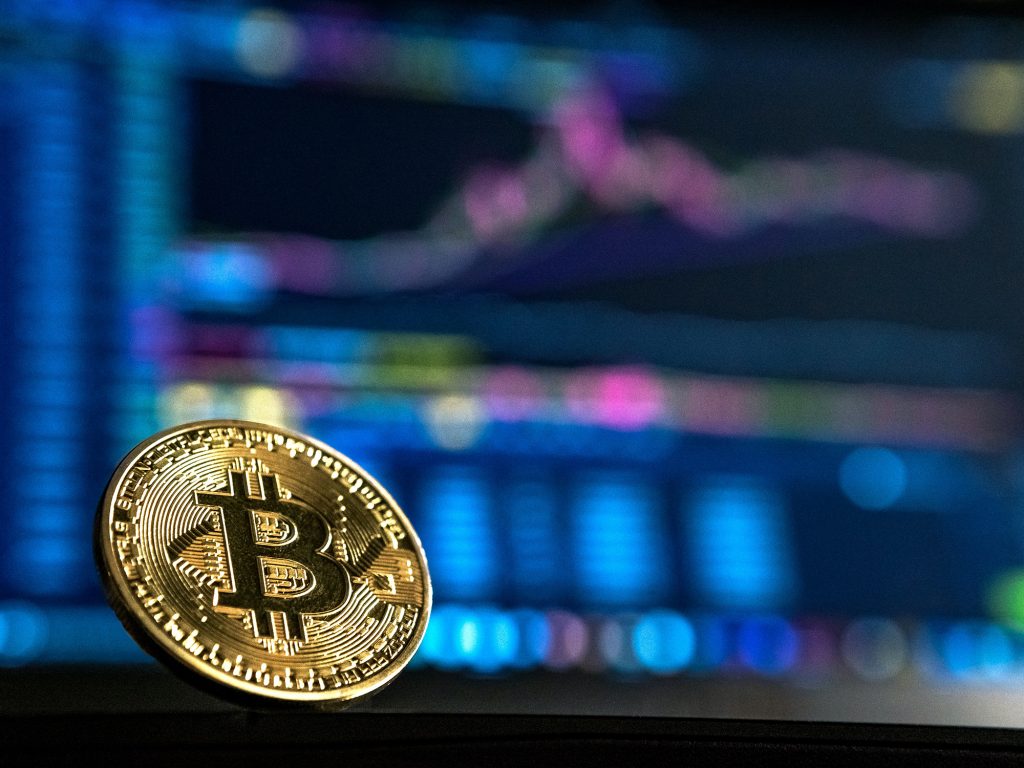
In addition, sanctioned countries can engage in cyber theft against financial institutions or steal cryptocurrencies as a source of funding, thereby undermining the impact of sanctions. North Korea seems to be aggressively pursuing this path. According to the U.S. Treasury Office of Foreign Assets Control, North Korean state-sponsored cyber groups have stolen over $1.1 billion dollars from financial institutions and banks in multiple countries. The groups have also reportedly stolen $571 million in cryptocurrency alone, primarily from five exchanges in Asia between January 2017 and September 2018.69“Treasury Sanctions North Korean State-Sponsored Malicious Cyber Groups,” U.S. Department of the Treasury, Sept. 13, 2019, https://home.treasury.gov/index.php/news/press-releases/sm774.
This suggests that the United States should be integrating its sanctions program within a broader cyberspace strategy. At a July 2019 hearing of the U.S. Senate Banking Committee, David Marcus, the head of Facebook’s new digital currency, suggested that fragmentation of financial services was a risk to sanctions and that, “[i]f we don’t lead, others will.”70David Marcus, “Examining Facebook’s Proposed Digital Currency and Data Privacy Considerations,” Senate Banking Committee, July 16, 2019, https://www.banking.senate.gov/hearings/examining-facebooks-proposed-digital-currency-and-data-privacy-considerations. The United States would be in a position to lead — and maintain leverage over block-chain based alternative financial networks — “if the technology were developed or operated by a U.S. company obliged to adhere to U.S. sanctions, technology-export restrictions, and other relevant laws, or a foreign company with significant U.S. exposure.”71Harrell and Rosenberg, Economic Dominance, Financial Technology, and the Future of U.S. Economic Coercion, 25. This reality speaks to the importance of lateral, integrated economic policies. The U.S. government requires a strategy to bridge the gap between its sanctions program and the realities of cyberspace and emerging technologies.72In 2018, the Treasury Department designated two Iran-based individuals: “Treasury Designates Iran-Based Financial Facilitators of Malicious Cyber Activity and for the First Time Identifies Associated Digital Currency Addresses,” U.S. Department of the Treasury, Nov. 28, 2018, https://home.treasury.gov/news/press-releases/sm556. But sanctioning individuals involved in certain bitcoin transactions is not the same as having a strategy for maintaining the effectiveness of sanctions in the face of proliferating digital currencies.
In sum, a durable and strategic approach to economic statecraft would use the different tools in the toolbox in concert. It would complement restrictions on outbound investment with technology transfer controls, other forms of targeted sanctions, and domestic investment initiatives. It would adapt investment screening and export controls, implementing reforms mandated by recent legislation and recognizing the increasingly complex and creative statecraft of America’s adversaries. And it would also respond to emerging challenges to America’s economic influence, including cryptocurrencies and other alternative financial networks, and to the long-term viability of U.S. statecraft tools.
The United States has an extensive economic statecraft toolbox, one that can be expanded further. Those tools are an asymmetric capability that America should treat as such to maximize its advantage. However, they will be most effective if implemented in concert with like-minded partners, though doing so can be complicated and slow, or even limit specific policy options.73See, for example, Friedberg and Boustany, jr., Partial Disengagement. See also the 2019 Government Accountability Office report — titled “Economic Sanctions” — which found “strong evidence” that “sanctions have been more effective when implemented through an international organization, or when targeted countries had some existing dependency on or relationship with the United States.” The statecraft and investment measures described above must go hand-in-hand with international coordination on technological development, supply-chain management and protection, and trade and investment strategies.
III. Increase international cooperation
The COVID-19 pandemic has highlighted the universal vulnerabilities inherent to globalization, but it also serves as a reminder of America’s unique position in the world. The United States has a singular ability to lead international efforts, and that ability endows it with great power. One of us witnessed that reality firsthand during the financial crisis when, as undersecretary of treasury for international affairs, he helped coordinate the international policy response. The United States makes the most meaningful progress when it leads and orchestrates international cooperation.
America’s partnerships and its leadership of multinational institutions are invaluable in a global crisis, but those relationships are also unique resources to leverage and reshape in this era of great-power competition. Many international organizations have drifted from their founding principles and are in need of reform. The United States should continue to help lead those reform efforts and ensure international trade, Internet governance, technology, and public health standards evolve in line with American principles and interests.74See, for example, Danielle Pletka, “It’s Time for a New World Order,” The Dispatch, April 14, 2020, https://thedispatch.com/p/its-time-for-a-new-world-order. On technology standards, see, Robert Strayer, “The Role of Global Standards in the Battle for 5G Leadership,” Remarks Given at the Hudson Institute, Dec. 17, 2019, https://s3.amazonaws.com/media.hudson.org/Transcript_Role%20of%20Global%20Standards%20in%20the%20Battle%20for%205G%20Leadership.pdf. The 2017 National Security Strategy rightly highlighted the “invaluable advantages that our strong relationships with allies and partners deliver.”75The National Security Strategy of the United States, 2. America’s leaders should continue to develop its network of like-minded partners and use them to further the innovation and statecraft agendas outlined above. In fact, those policies are unlikely to be effective without such international coordination.
More specifically, to reinforce its domestic innovation agenda, the United States should consider opportunities to establish partnerships dedicated to the principled, multinational development and fielding of core technologies.76For a similar proposal, see, Daniel Kliman et al., Forging an Alliance Innovation Base, Center for a New American Security, March 2020, https://s3.amazonaws.com/files.cnas.org/documents/CNAS-Report-Alliance-Innovation-Base-Final.pdf?mtime=20200329174909. This effort could expand the existing multinational industrial base and lean on America’s longstanding military and intelligence partnerships,77See, “Defense Primer: The National Technology and Industrial Base,” Congressional Research Service, Jan. 31, 2020, https://fas.org/sgp/crs/natsec/IF11311.pdf. including its robust intelligence-sharing relationship with the “Five Eyes” partners.78See, “Five Eyes Intelligence Oversight and Review Council,” Office of the Director of National Intelligence, https://www.dni.gov/index.php/who-we-are/organizations/enterprise-capacity/chco/chco-related-menus/chco-related-links/recruitment-and-outreach/217-about/organization/icig-pages/2660-icig-fiorc. Close friends, like Japan and possibly India, should be central to these efforts. U.S. leaders ought to also consider expanding the Defense Innovation Unit model and establishing international venture funds with the Five Eyes partners plus Japan, NATO, and other treaty allies to help jointly fund research in these nascent capabilities. These coalitions could set standards for the adoption and use of emerging technologies,79See, for example, Rebecca Arcesati, “Chinese Tec Standards Put the Screws on European Companies,” Mercator Institute for China Studies, Jan. 29, 2019, https://www.merics.org/en/blog/chinese-tech-standards-put-screws-european-companies. and they would not only optimize each country’s resources and capabilities but also increase the interoperability of their respective technologies — a boon for military alliances and economic partners alike. Similarly, encouraging academic and talent exchange programs among this group of close partners would help develop knowledge and innovative capacity both at home and abroad.
The COVID-19 pandemic has highlighted the universal vulnerabilities inherent to globalization
The case of the 5G network infrastructure is instructive. The recently released National Strategy to Secure 5G outlines a number of initiatives to develop and govern 5G, including supply chain risk management and international development goals.80National Strategy to Secure 5G of the United States of America, The White House, March 2020, https://www.whitehouse.gov/wp-content/uploads/2020/03/National-Strategy-5G-Final.pdf. The United States is right to voice concerns about supply chain security and the impact of 5G technology. But, while Australia, Japan, and New Zealand share America’s concerns, even close U.S. partners think they can mitigate the security risks posed by Huawei’s 5G technology, as we have seen with the United Kingdom.81Max Colchester, “U.K. Allows Huawei to Build Parts of 5G Network, Defying Trump,” Wall Street Journal, Jan. 29, 2020, https://www.wsj.com/articles/u-k-allows-huawei-to-build-parts-of-5g-network-11580213316. Ultimately, the fate of efforts to resist Huawei’s bids will depend on the availability of affordable alternatives.
A bipartisan group of U.S. senators provided one blueprint for how the United States could work with its partners to make non-Huawei suppliers more viable and affordable: by promoting the research and development of open architecture networks, providing material support to countries considering alternatives to Huawei, and becoming more active in standards-setting bodies.82For more information, see, “National Security Senators Introduce Bipartisan Legislation to Develop 5G Alternatives to Huawei,” Press Release from the Office of Sen. Richard Burr, Jan. 14, 2020, https://www.burr.senate.gov/press/releases/national-security-senators-introduce-bipartisan-legislation-to-develop-5g-alternatives-to-huawei. Another approach would be to establish a U.S.-led “5G Development Fund that would extend lines of credit … to strategic partners seeking to develop 5G networks,” as a Reagan Institute Task Force suggested in 2019.83The Contest for Innovation, 20. Through such a fund, the United States and its partners could offer financial support to any middle- or low-income country that chooses a non-Huawei provider. America could also help establish an international consortium to support alternatives to Huawei’s 5G technology, such as Nokia or Ericsson. There is, in other words, a range of options for international coordination on 5G development, which the U.S. government is wisely considering. Similar opportunities can be found in AI development and other emerging technologies.84See, for example, Mike Gallagher and Tom Tugendhat, “Five Eyes Must Lead on 5G,” War on the Rocks, April 25, 2019, https://warontherocks.com/2019/04/five-eyes-must-lead-on-5g. (In this article, the authors describe a technical cooperation program related to AI).
Actively engaging and leading standards-setting bodies would help the United States further promote both domestic and partner innovation. America’s competitors work to influence and set international technical standards to advance their goals of technological leadership.85The new “China Standards 2035” plan, for example, sets out an ambitious initiative to shape the standards of technologies that will be central to critical infrastructure. See, Arjun Kharpal, “Power Is ‘up for grabs’: Behind China’s Plan to Shape the Future of Next-Generation Tech,” CNBC, April 26, 2020, https://www.cnbc.com/2020/04/27/china-standards-2035-explained.html. These efforts function alongside state subsidies and market access restrictions to net long-term market shares.86China, for example, has worked to influence AI and Internet of Things standards, among others. For more information about their AI-related efforts, see, 2019 Annual Report to Congress, U.S.-China Economic and Security Commission, 214–15. For more on Internet of Things efforts, see, John Chen et al., China’s Internet of Things, U.S.-China Economic and Security Commission, October 2018, https://www.uscc.gov/sites/default/files/Research/SOSi_China%27s%20Internet%20of%20Things.pdf. Indeed, as noted by Alan Beattie, “first-mover advantage in setting standards and rules can give a powerful edge to companies and businesses.”87Alan Beattie, “Technology: How the US, EU and China Compete to Set Industry Standards,” Financial Times, July 23, 2019, https://www.ft.com/content/0c91b884-92bb-11e9-aea1-2b1d33ac3271. The National Strategy to Secure 5G recognizes that to maintain its innovation leadership and market access in high-tech sectors the United States should be more proactive in promoting favorable and open standards. It can do so by increasing its presence in key multilateral bodies, encouraging U.S. firms to engage in standards-setting bodies through tax incentives, and ensuring export controls or other sanctions do not prevent U.S. entities from engaging in these organizations.
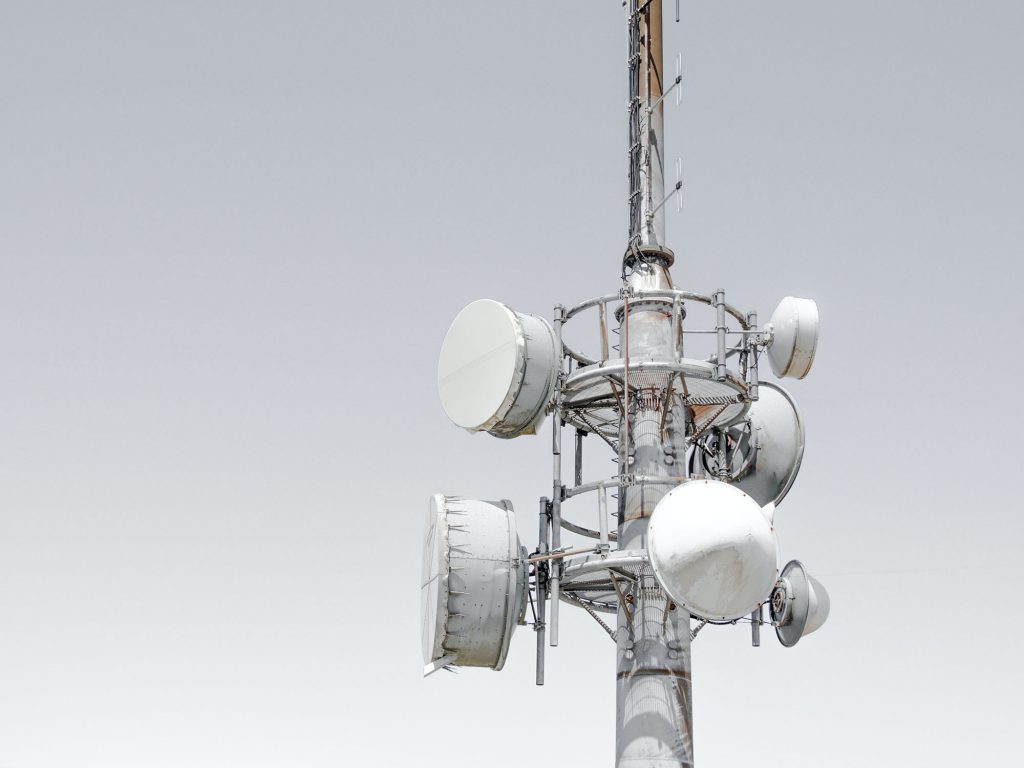
To secure international innovation and expand its own statecraft efforts, the United States should help its partners develop and implement mechanisms to review foreign investments and address technology transfer. America’s partners have been subject to malicious foreign investments.88For accounts of foreign direct investment in Europe, see, Agatha Kratz et al., Chinese FDI in Europe: 2019 Update, Mercator Institute for China Studies, April 8, 2020, https://www.merics.org/en/papers-on-china/chinese-fdi-in-europe-2019; and Elisabeth Braw, “China Is Bargain Hunting—and Western Security Is at Risk,” Foreign Policy, April 15, 2020, https://foreignpolicy.com/2020/04/15/china-is-bargain-hunting-and-western-security-is-at-risk/. The European Union has awoken to the challenge and is developing guidance for screening investments in critical or dual-use sectors, including health, energy, and communications.89For recent E.U. guidance, see, “Guidance to the Member States Concerning Foreign Direct Investment and Free Movement of Capital from Third Countries, and the Protection of Europe’s Strategic Assets, Ahead of the Application of Regulation (EU) 2019/452 (FDI Screening Regulation),” European Commission, March 25, 2020, https://trade.ec.europa.eu/doclib/docs/2020/march/tradoc_158676.pdf. While the United States should tread carefully, E.U. members may need help implementing that guidance and establishing processes for deliberate, thorough review, modeled after the U.S. approach. The United States could similarly work with G7 members and other partners around the world to strengthen their measures.
U.S. policy should give preference to expanded trade and investment relationships with like-minded states.
The United States should also continue to offer technical assistance and financial support to countries considering major foreign infrastructure investments.90The administration’s Blue Dot Network, for example, is a step in the right direction. For more information, see, “Blue Dot Network,” U.S. State Department, accessed May 4, 2020, https://www.state.gov/blue-dot-network/. Though often overstated, China’s infrastructure and investment programs, such as the Belt and Road Initiative, and its push to export its Internet governance model have challenged America’s position in the global economy over the past decade. The United States has been wise not to try to out-compete China in every corner of the world. Instead, it should expand its initiatives to work with partners to offer alternatives to Chinese-backed projects that create unsustainable debt levels or corrupted networks. As Matt Pottinger, the deputy national security adviser, explained at the Raisina Dialogue in January 2020, the United States can work with the private sector, like-minded partners, and international lending bodies to promote commercial development, transparency, and high standards and to help developing states integrate into that principled, fair, and open system, which in turn will buttress America’s position within the global economy.91See, Matt Pottinger, remarks on the “Coalitions and Consensus: In Defense of Values that Matter” panel at the Raisina Dialogue, New Delhi, Jan. 16, 2020, https://www.youtube.com/watch?v=gotKrQTVKQ4. The International Development Finance Corporation — formerly the Overseas Private Investment Corporation — and multinational organizations, such as the Inter-American Development Bank and the World Bank, will be the key actors in directing infrastructure investments. Fortunately, they require relatively low levels of federal funding.92Zack Cooper, “Bridging the Transatlantic Divide on China,” Testimony Before the House Foreign Affairs Committee Subcommittee on Europe, Eurasia, Energy, and the Environment on China’s Expanding Influence in Europe and Eurasia, May 9, 2019, https://docs.house.gov/meetings/FA/FA14/20190509/109430/HHRG-116-FA14-Wstate-CooperZ-20190509.pdf.
Finally, U.S. policy should give preference to expanded trade and investment relationships with like-minded states. As Rep. Mike Gallagher has argued, trade is a powerful tool for incentivizing allies and partners to adopt U.S. security standards regarding new technologies and supply chains, which in turn advances America’s economic statecraft objectives.93Mike Gallagher, “Let the Trans-Atlantic Trading Begin,” Wall Street Journal, Feb. 6, 2020, https://www.wsj.com/articles/let-the-trans-atlantic-trading-begin-11581033321. Such agreements also reduce dependencies on other countries with interests that may diverge from those of the United States and give the United States greater influence over a range of global decisions that address areas of convergence, including data protection, ethical standards for the use of emerging technologies, and other issues related to data flows. Offering favorable trade terms in return for agreement on security protocols is a win-win opportunity for the United States that protects America’s asymmetric position. To quote Aaron Friedberg and Charles Boustany, Jr., “High-standard trade agreements linking the economies of North America, Europe, and parts of Asia would help fuel the growth of all the nations involved, enhancing their collective wealth and power and strengthening their ability to defend shared interests and common values.”94Friedberg and Boustany, Jr., Partial Disengagement, 36.
International coordination of the type envisioned here will require regular collaboration between U.S. and partner-state leaders, namely finance ministers. Fortunately, U.S. leaders already meet with America’s chief partners at the annual G7 summit and other conclaves. Rather than reinventing the wheel, the United States should consider establishing a follow-on session to the G7 summit that is focused on the convergence of national security and economic affairs, incorporating additional countries such as Australia, New Zealand, and India. Leaders could exchange information about existing strategies, trade arrangements, and investments, similar to what already takes place in the security arena at NATO summits.

